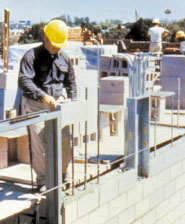In construction, the goal of inspection and quality assurance is straightforward: verify that the building is being built properly and that the owner is getting not only what they asked for, but what they are paying for. For masonry, we need to know things such as:
- materials meet their individual specifications
- mortar is mixed to the correct proportions
- grout is placed in the right cells and adequately consolidated

As masonry walls have become taller and thinner, the system has moved from load bearing units to hollow units that contain reinforcement and grout in their cores.
There are several approaches for improving the quality of masonry construction. These include new products, new construction methods, and different ways of testing or inspecting the work.
One trend in masonry is a greater focus on inspection, with good reason. The manner in which seismic zones are defined has been changing over the last few years. The definition of seismic areas has been broadened so that a greater proportion of the United States falls into those categories. It is not that any part of the country is any more or less at risk of a seismic event, but the government and codes organizations have decided that greater protection can be built into structures from the outset. The increased focus on seismic design has led to more grouted masonry, necessary to encase the reinforcement and add strength and ductility to a wall. Download article on seismic design considerations in model codes.
Along with this revised approach, the three legacy building codes (Uniform Building Code (UBC), National Building Contractors (NBC), Standard Building Code (SBC) have converged into a single national document (International Building Code), lessening regional differences. The IBC is published by the International Code Council.
The International Building Code contains guidance on the level of inspection necessary based on building type and use. There are two levels of inspection, appropriately called Levels 1 and 2, and one exempt category, meaning no inspection is required. Some tasks require periodic inspection and some require continuous inspection. (Only non-essential facilities that are empirically designed masonry, glass block masonry, or masonry veneer fall into the exempt category).